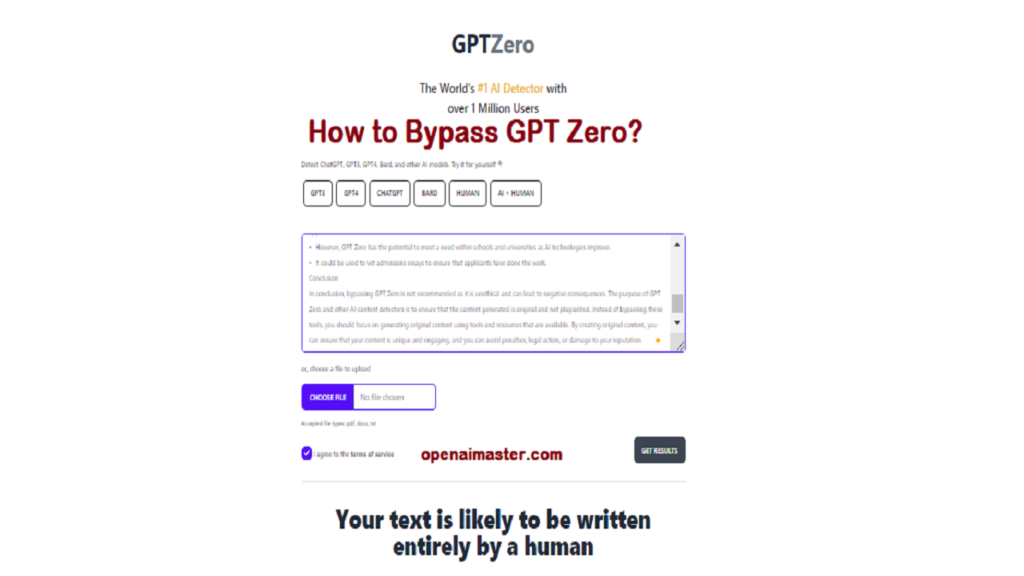
Introduction to BypassGPT
Artificial Intelligence (AI) has become increasingly sophisticated in recent years, offering a wide range of applications. One area where AI has been particularly influential is content detection, where algorithms are used to identify and filter out inappropriate or misleading content.
However, this has led to a back-and-forth battle as developers create new methods to bypass AI content detectors. A recent contender in this arena is BypassGPT, an AI content rewriter that claims to fool even the most advanced content detection systems. In this article, we will explore the capabilities of BypassGPT and assess whether it truly lives up to its promises.
Delving into the Mechanism
How BypassGPT Works
BypassGPT is an AI-powered tool developed by a team of researchers and engineers. The key idea behind BypassGPT is to use advanced language models, specifically the GPT-3 framework developed by OpenAI, to rewrite content in a way that makes it undetectable by AI content detectors. By taking advantage of the capabilities of GPT-3, BypassGPT aims to generate text that appears natural and authentic to human readers, while at the same time evading automated detection systems.
The developers of BypassGPT claim that their tool can be used to generate content that can be used for a variety of purposes, including creating persuasive marketing copy, bypassing moderation filters on social media platforms, or even plagiarizing content without being detected. However, it is important to note that while the use cases suggested by the developers may be possible with BypassGPT, they may also raise ethical concerns and may even be illegal in some jurisdictions.
Analyzing the Effectiveness
The Effectiveness of BypassGPT
To assess the effectiveness of BypassGPT, it is crucial to consider both its strengths and limitations. On one hand, there is no denying that BypassGPT is a powerful tool that can generate text that appears natural and human-like. It has been tested extensively and has shown impressive results in making AI text undetectable. Many users have reported success in bypassing filters and detection systems with the help of BypassGPT.
However, it is important to note that no tool is perfect, and BypassGPT is no exception. While it may be effective in fooling AI content detectors, it is not foolproof. Its success largely depends on the sophistication of the content detection system it is being pitted against. As AI algorithms evolve, so do content detection systems, and it is only a matter of time before they catch up with the latest techniques used by BypassGPT.
Another limitation of BypassGPT is its potential for misuse. As mentioned earlier, the tool can be used for unethical and illegal purposes. Plagiarism, spreading disinformation, or evading content moderation systems can have serious consequences and go against the principles of responsible AI use.
Considering the Ethics
Ethical Considerations
With the advent of powerful AI tools like BypassGPT, it becomes crucial to address the broader ethical considerations that arise. While BypassGPT may have legitimate uses in certain industries, its potential for misuse raises serious concerns. Content moderation and filtering systems are put in place to protect users from harmful or false information, and tools like BypassGPT undermine these efforts.
By allowing users to bypass content detection systems, the tool paves the way for the spread of disinformation, hate speech, and other undesirable content. This poses a threat to the trustworthiness and integrity of online platforms, and ultimately to society as a whole. It is important for developers, researchers, and policymakers to carefully consider the implications of such tools and ensure that they are used responsibly.
Future Prospects and Challenges
The Future of Content Detection
The battle between content creators and content detectors is unlikely to cease anytime soon. As AI technology advances, so will the methods used to bypass content detection systems. While tools like BypassGPT may prove effective in the short term, it is essential for developers to focus on creating content detection systems that can keep pace with the evolving tactics of those looking to deceive them.
Algorithm developers must continuously update their detection systems, employing advanced machine learning techniques to identify and flag artificially generated content. Efforts should also be made to educate users about the potential risks associated with AI-powered tools like BypassGPT, promoting responsible use and discouraging the dissemination of harmful or misleading information.
Reflecting on BypassGPT’s Role
Conclusion
BypassGPT is undoubtedly a powerful tool that presents a challenge to AI content detection systems. Its ability to generate human-like text that evades automated detection is impressive and concerning simultaneously. However, we must not lose sight of the ethical considerations involved. While BypassGPT may have legitimate applications, its misuse can undermine the integrity of online platforms and have significant societal implications.
As AI technology continues to evolve, it is crucial for developers to stay ahead of those seeking to bypass content detection systems. The battle between content creators and detectors is a continuous one, and the future of content detection lies in the development of robust algorithms that can quickly adapt to new evasion techniques. Responsible use of AI-powered tools and a collective effort by developers, researchers, and policymakers can help ensure that the benefits of AI are harnessed ethically and that the potential risks are minimized.
Ultimately, it is up to us as users and creators of content to reflect on the impact of our actions. The use of tools like BypassGPT, while tempting, should be carefully considered and aligned with ethical principles. As we navigate through the complexities of AI and its impact on society, it is essential to strive for a balance between technological progress and responsible use to create a better, more informed digital world.



